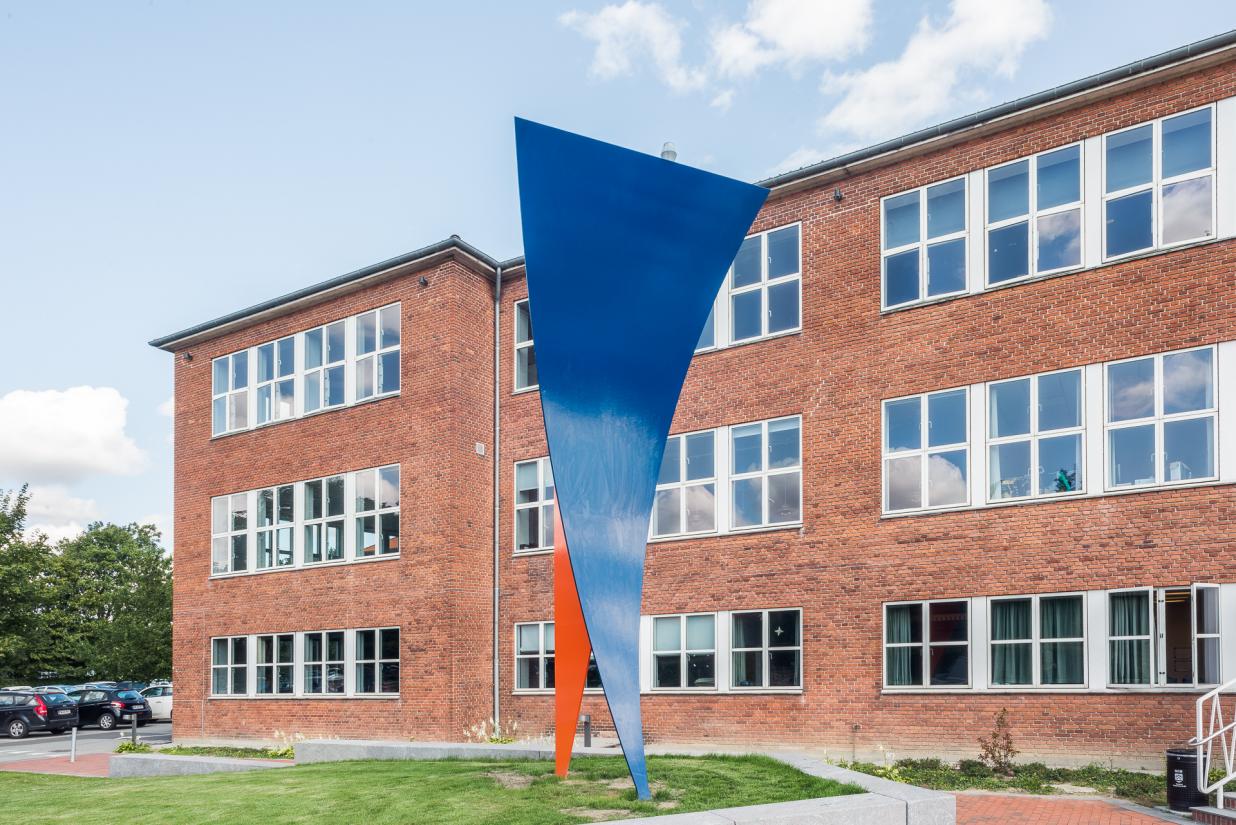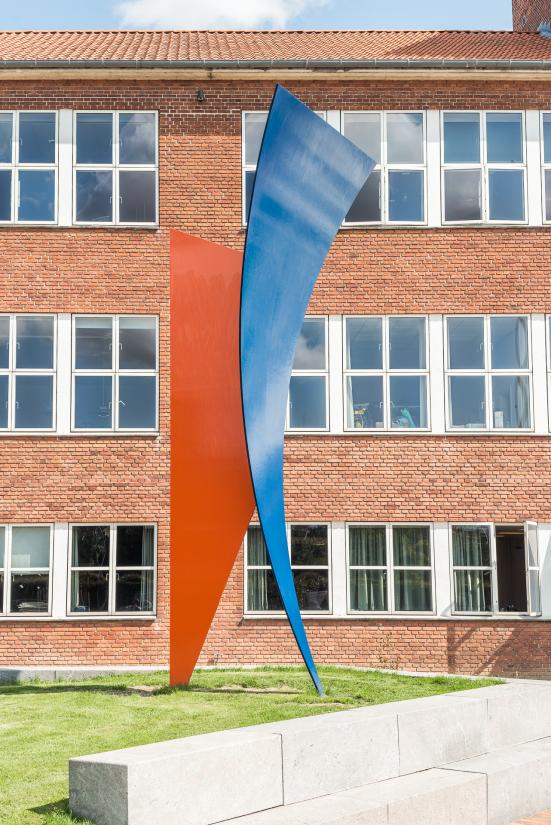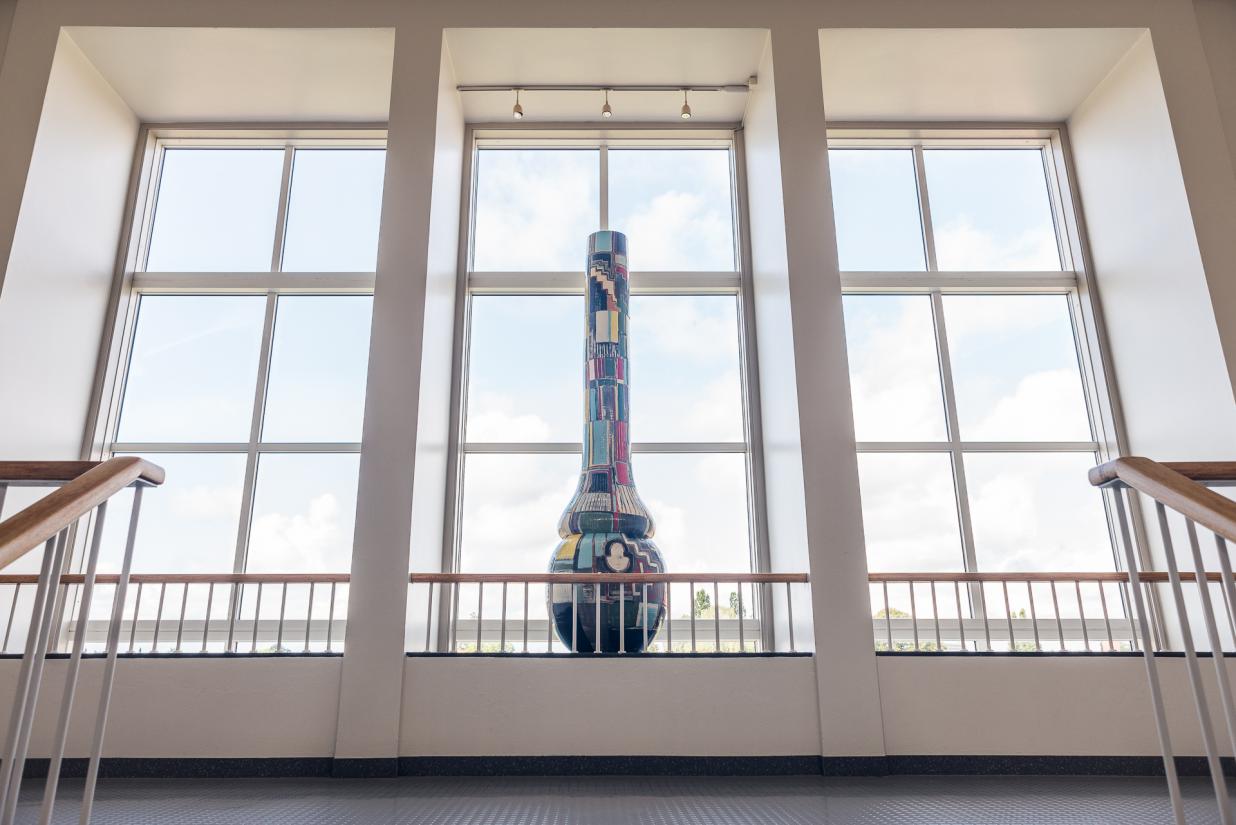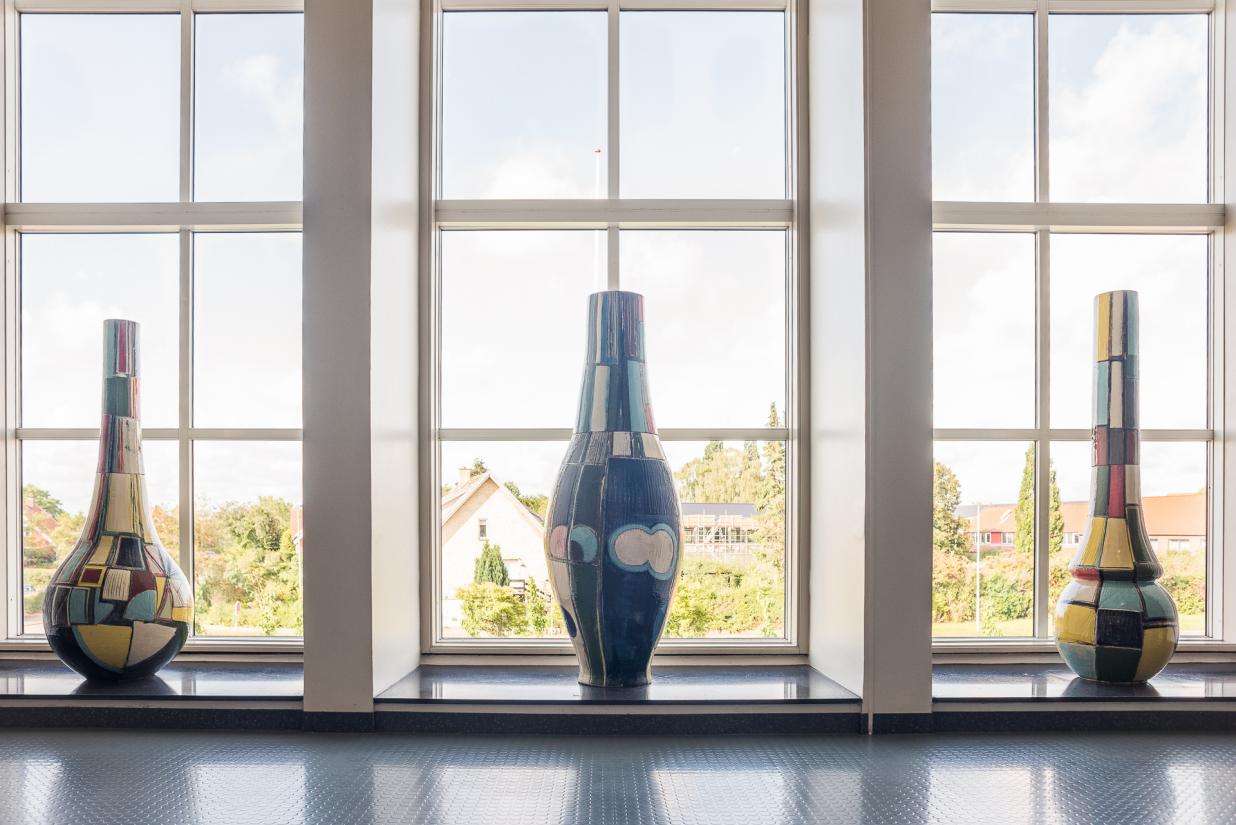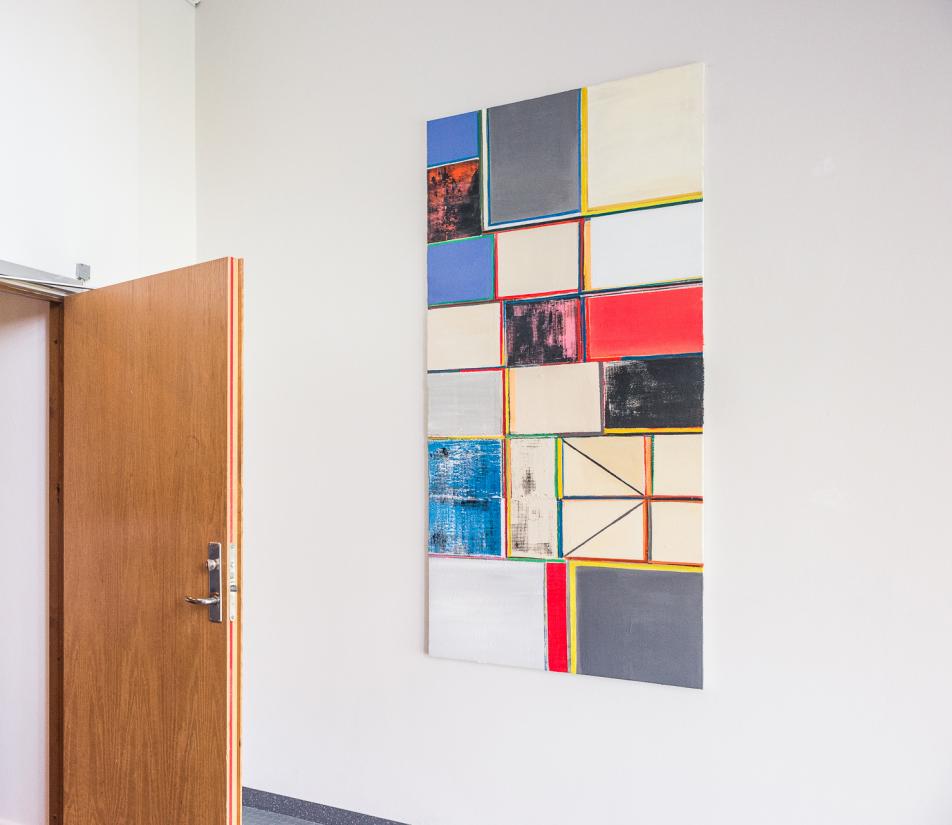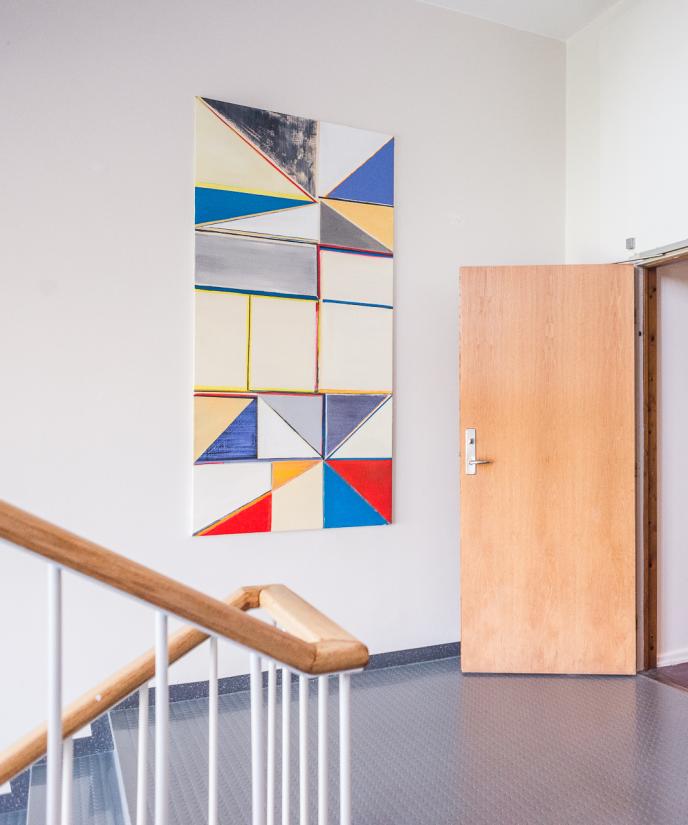Amalie Jakobsen’s 5.4-metre-tall steel sculpture Shape Shifter is placed outdoors in front of the entrance to the upper secondary school Næstved Gymnasium & HF. Here it acts like a welcoming beacon, inviting students, teachers and passers-by in. And with her four ceramic objects and two paintings, Anna Sørensen has carried out an artistic transformation of the large window areas and the central stairs. A common quality of the two decorative projects is a carefully considered approach to forms and colours. Two site-specific artistic contributions that both challenge and support the rooms they are placed in and the setting they reflect.
Connection between form and space
Jakobsen created the sculpture Shape Shifter around a story of geometry. It consists of two triangles: a two-dimensional surface representing classical geometry and a three-dimensional curved form representing a newer scientific geometry with a more abstract notion of time and space.
The curved triangle is painted deep blue, a colour that instantly catches the viewer’s eye. Its bent shape creates a space around the sculpture and contrasts the school’s more stringent architecture. The flat orange triangle cuts into the curvy shape and is perceived as the load-bearing element of the sculpture, its stable support. The orange colour resonates with the red bricks of the building.
As a unified form, the sculpture has a simultaneously light and ambitious expression. The two triangles visualize the meeting of two worlds: the linear world that seems intuitively understandable and the more abstract, curved world that we may ultimately grasp. The sculpture visualizes the learning and development process that the students at Næsteved Gymnasium & HF are engaged in.
Controlled chaos
Sørensen’s ceramic objects and paintings are distributed across two floors in the building’s central staircase. Four elongated ceramic pieces in organic forms are placed in the large window area where they break up the clean lines of the architecture. The paintings are hung facing one another on the landing, linking the two levels together. Forms and colours contrast each other and create an almost dynamic movement in the paintings, and yet, Sørensen’s convincing grasp of colour and form make the pieces appear as small well-balanced compositions that form a unified whole.
The step-inspired shapes that are a recurring aspect of both the ceramic objects and the paintings create a sense of mobility in the expression of the artworks. The shapes reflect both the physical movement up and down the stairs and the educational levels that the students transition through. The abstract surfaces that seem to make up a controlled chaos of organic and geometric forms engage in dialogue with the life unfolding in an institution of learning.
